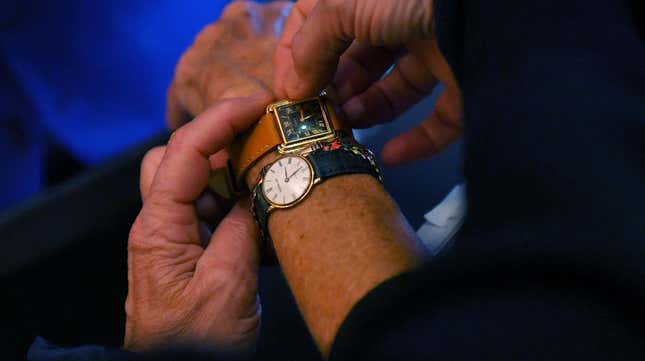
The Senate might just finally do away with Daylight Saving Time (DST) clock shifts, ridding America of the twice-a-year impositions on everyone’s sanity and standardizing time at the moment after the clock jumps forward on March 14 this year. Of course, similar proposals have regularly flamed out over the years, so take that with a grain of salt.
The annual transitions between DST and Standard Time manage to be both simple and a headache-inducing confusion. At 2:00 a.m. on the second Sunday in March, clocks roll forward an hour, and at 2:00 a.m. on the first Sunday in November, clocks roll back an hour. That means from March to November, Americans get an extra hour of sunlight or so during the evening, and from November to March, Americans get an extra hour or so of sunlight in the early hours of the morning.
Despite complicated and semi-mythical rationales for DST—it’s commonly cited as an invention of Benjamin Franklin, who actually just wrote a joke article suggesting taxing window shades and firing cannons in the streets of Paris to wake the French up earlier—it was actually originally implemented nationwide in 1918 as part of an effort to conserve fuel and stick it to the Kaiser and the Imperial German Army during World War I, something that is now completely irrelevant. The U.S. flipped back and forth before the 1966 Uniform Time Act made DST an annual, permanent fixture.
These days, the non-DST parts of the year means Americans on a traditional 9-5 schedule enjoy less sunlight by the time they leave work during the winter and a rude transition in March. According to CBS News, Democratic Sen. Ed Markey, Sheldon Whitehouse, and Ron Wyden have advanced a bipartisan proposal titled the Sunshine Protection Act with their Republican counterparts Roy Blunt, Cindy Hyde-Smith, James Lankford, Marco Rubio, and Rick Scott, to just make DST permanent.
According to a fact sheet circulated by Rubio’s office, the benefits of permanent DST would include improvements in the physical and mental wellbeing of the nation’s populace, less crime, and actually save energy. CBS writes:
[Staying in DST] would reduce car crashes and pedestrian accidents as daylight hours will better align with drivers’ standard work hours and increase visibility, according to the American Journal of Public Health and the Journal of Safety Research [...] It will reduce the risk for cardiac issues, stroke and seasonal depression and, according to a 2015 Brookings Institution, it would reduce the number of robberies by 27 percent.
Other studies say it will benefit the economy, reduce childhood obesity and benefit agriculture. It would also reduce energy usage, as people won’t need to use as much electricity each day, a 2008 study by the U.S. Department of Energy shows, according to Rubio’s fact sheet.
Time is a flat circle, whether it’s daylight saving or standard, and battles in Congress over whether to end the transitions and which way to go have been going on for decades. According to USA Today, counterparts to the legislation in the House have been stalled in the Energy and Commerce Committee.
Proponents of eliminating DST and sticking with Standard Time year-round have made similar arguments about benefits to public health, such as that DST messes with the circadian rhythm and thus negatively impacts human health. Sleep scientists have generally advocated the Standard Time approach.
Polling has shown that the vast majority of Americans (71 percent) would prefer ending the switch back and forth, with 31% in favor of permanent DST and 40% backing permanent Standard Time. Of course, given the mental gymnastics and conflicting claims about mental and physical wellbeing involved, it’s debatable how many of those people are just randomly picking one side or the other in the hopes the clock changes will finally stop.
There have been at least 350 pieces of state legislation that would switch to either permanent DST or Standard Time, according to McClatchy DC. The state of Florida has already passed a bill transitioning the state to permanent DST, but it’s contingent on federal legislation also passing. At least 15 other states have passed similar legislation picking one side or the other, passing the buck to the feds rather than risk desynchronizing the fabric of time between states.